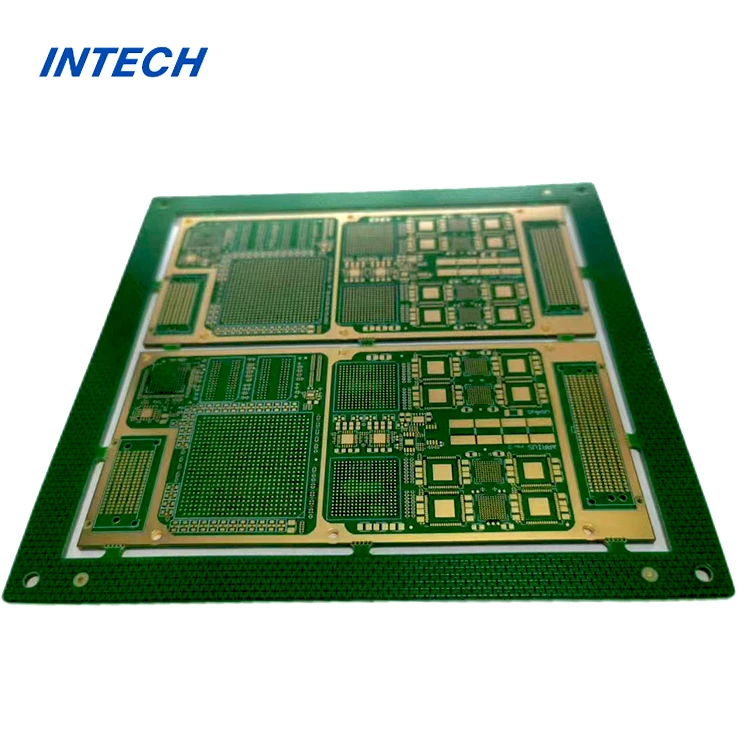Where are rigid-flex PCB used?
Date:2023-07-05 17:14:28
Understanding the Versatility of Rigid-Flex PCBs
The demand for smaller, lighter, and more powerful electronic devices has driven the innovation of printed circuit boards (PCBs). Among these advancements, rigid-flex PCBs have emerged as a key technology. Utilizing a combination of flexible and rigid materials, these unique PCBs offer numerous advantages in terms of design freedom, size reduction, and durability. In this article, we will explore the various applications where rigid-flex PCBs are used and highlight their benefits.

1. Aerospace and Aviation
Rigid-flex PCBs find extensive use in the aerospace and aviation industries due to their ability to withstand extreme conditions while offering reliable performance. These PCBs are utilized in satellite systems, navigation equipment, communication devices, and avionics. The flexibility of the PCBs enables them to conform to the curved shapes of aircraft while improving space utilization. Rigid-flex PCBs also provide enhanced resistance to vibration and shock, ensuring the uninterrupted operation of critical aerospace systems.
2. Medical Devices and Equipment
In the medical field, rigid-flex PCBs play a crucial role in the development of advanced diagnostic and therapeutic equipment. Their compact size and durability make them ideal for implantable medical devices, such as pacemakers and hearing aids. Rigid-flex PCBs also offer exceptional signal integrity, allowing for accurate data transmission in medical imaging systems and laboratory equipment. The ability to incorporate multiple layers, connectors, and components within a single board provides significant space savings, crucial in portable medical devices.
3. Consumer Electronics
Rigid-flex PCBs have become increasingly popular in consumer electronics due to their versatility and space-saving capabilities. They are widely used in smartphones, tablets, wearables, and portable electronic devices. The flexible portions of the PCBs allow for compact designs, bending and folding, enabling new form factors and ergonomic features. Rigid-flex PCBs also enhance reliability by reducing the number of electrical interconnects, minimizing the risk of failures caused by loose connections or mechanical stress.
4. Automotive Industry
Modern vehicles rely heavily on advanced electronics for safety, efficiency, and entertainment systems. Rigid-flex PCBs find applications in automotive electronics, including GPS navigation, engine control units, infotainment systems, and sensors. Their ability to withstand vibration and high-temperature environments ensures reliable performance in demanding automotive conditions. Rigid-flex technology also supports the integration of antennas and sensors directly within the PCB, reducing the need for additional components.
5. Industrial and Robotics
Rigid-flex PCBs have made significant contributions to industrial automation and robotics. They enable the development of compact and lightweight control systems for factory automation, robotic arms, and machine vision systems. The flexibility of these PCBs allows for better integration within limited spaces, while their durability ensures long-term reliability in challenging industrial environments. Rigid-flex technology also supports the seamless integration of sensors, microcontrollers, and connectivity modules, enabling efficient communication and control in complex industrial applications.
Conclusion
Rigid-flex PCBs have revolutionized various industries by offering unparalleled design flexibility, space-saving capabilities, and durability. From aerospace and aviation to medical devices, consumer electronics, automotive, and industrial applications, rigid-flex PCBs continue to push the boundaries of what is possible in electronic design. The unique combination of flexible and rigid materials makes them versatile and reliable, providing numerous advantages over traditional PCBs. As technology advances further, rigid-flex PCBs are expected to play an even larger role in shaping the future of electronic devices.
